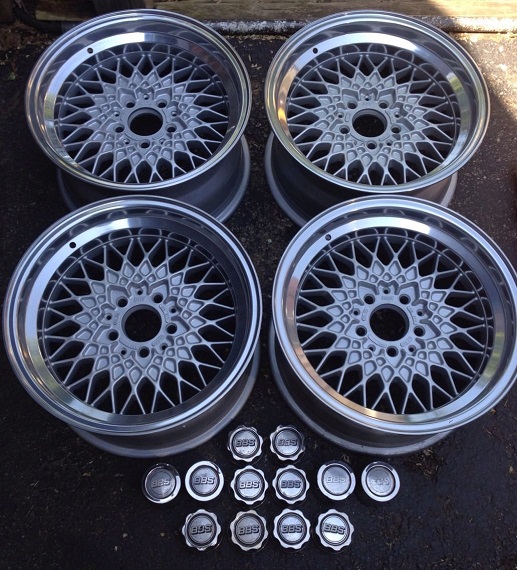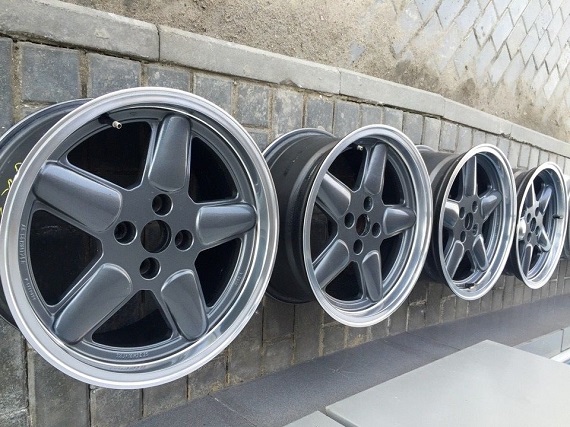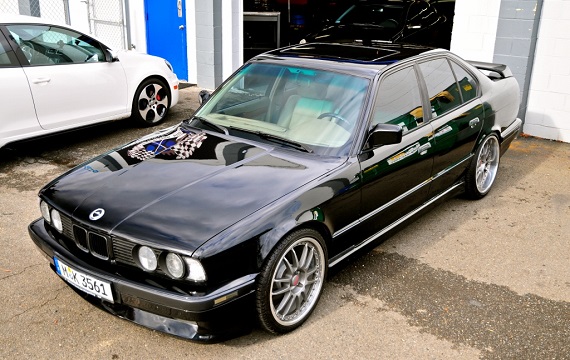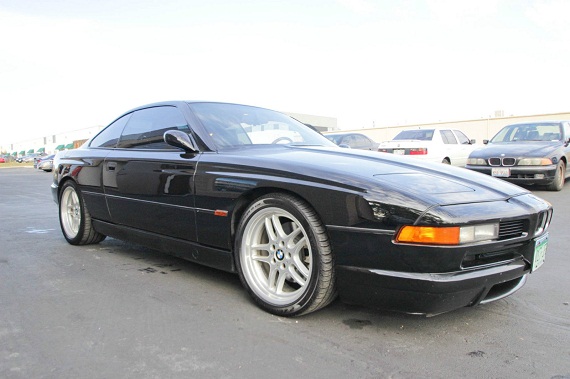It’s a day ending in “Y”, so you better believe that my mind has been on wheels. I stumbled across a few neat sets this week and though I’d post them up for any wheel whores such as me. We’ve got a neat set of Schnitzer classic 5 spokes for E30s, along with a rare set of 924 Turbo Manhole covers. They’re forged and the proper setup for the narrow body 924, and fairly rare to see. Also rare to see are a set of the Penta AMG replica wheels. Not as valuable as the ATS made wheels, they’re nonetheless pretty neat. There’s a mega set of BBS RAs that would just be stunning on an early 80s Mercedes SEC and a neat and very rare to see set of BBS-like Melber wheels. What’s your favorite?
Tag: AC Schnitzer
In the 1980s and early 1990s, Dinan was still on the cutting edge of performance tuning. As with Reeves Callaway, Steve Dinan had started turbocharging BMWs to create supercar-slaying sedans and coupes. At that point, Dinan was a lesser-known tuner than the likes of Alpina and Hartge, but the results of their turbocharging the S38 in the BMW M6 notably gained the car the nickname “The Annihilator”. That should tell you something of the level to which Dinan Cars brings their creations to whilst retaining the original attributes of the base car. It’s a special combination that resulted in Dinan being incorporated into the BMW dealer network; today, cruise down to your dealership and you can buy Dinan products and software upgrades for just about any model and retain your warranty. Because of that connection, an appreciation for early Dinan cars continues to grow though in general they remain more affordable than their German tuner counterparts. They are, however, just as rare to come across – especially when they come in the condition of today’s 1991 535i, one of the last of Dinan’s inline-6 turbo creations:
CLICK FOR DETAILS: 1991 BMW 535i Dinan Turbo on GCFSB
6 CommentsThe S54-equipped M Coupe seemed destined to be a collector car right out of the box. With a limited number produced, almost immediately enthusiasts began numbering their cars – there are, in fact, websites that are specifically dedicated to determining just how rare your M Coupe was. In the case of today’s example, it’s a claimed one of nine, and that’s easy to believe – because boil down the multitudes of combinations that were made with the E36/8 M Coupe, and you’ll soon discover that they’re all one of a small number. But this particular M Coupe is even more rare than most, with a host of Dinan and AC Schnitzer upgrades and some of the lowest miles on one today, with only around 1,000 miles a year accrued:
CLICK FOR DETAILS: 2001 BMW M Coupe on eBay
2 CommentsI’d like to try a social experiment if you’ll allow me; I’d take an E30 M3 listing and say absolutely nothing about it. My hypothesis is that it wouldn’t matter; the car would still generate lots of comments both positive and negative, outlining both the strengths of the E30 and the rapid appreciation of the market. The convergence of factors that has resulted in the M3 market as we see it today is the evolution of not only a naturally occurring timeline coupled with a increase of personal wealth vis-a-vis the ownership group juxtaposed with those who actually ponder ownership. This, in turn, can be viewed as in part the skeuomorphic racing details of the M3 coupled with the natural analogue interface of the E30 chassis. Immersion in the marketplace has resulted in datafication as we try to quantify the various appeals of the models and even sub-models, while the scalability of the marketplace seems to utilize fuzzy logic – models constantly morphing in and out of vogue as the relative price of ownership fluctuates. Modularity in the E30 platform has not helped but convoluted the matter. Coupled with the emergence of internet fora the M3 is the first truly viral car. The rapid influx of various examples in order to take advantage of these previously stated confluence of factors has resulted in, ironically, crowdsourcing in an effort to elicit an explanation:
CLICK FOR DETAILS: 1990 BMW M3 on eBay
13 CommentsThe question of badges, badge engineering and car’s values are always interesting to me. Obvious car values vary considerably, but some times enthusiasts really gravitate towards one particular year or sub-model within a lineup and choose that model for value. Yesterday’s 1995 M3 raised that point; while it was a neat color and lower mileage with good overall condition, it was the OBD1 status that had some claiming that it should be worth more than later models. In the case of the E31, it’s obviously the big-dog 850CSi that stands out with its BMW Motorsport heritage and build. But let’s say, for argument’s sake, that there was arguably a nicer example of the lesser 850i 6-speed with some light modifications available at the same time – is the M badge that important?






